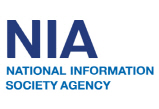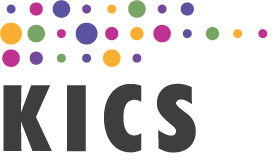Now 864 visitors
Today:353 Yesterday:913
Total: 4139
404S 103P 85R
2026-01-07, Week 2 |
| Member Login |
| Welcome Message |
| Statistics |
| Committee |
| TACT Journal Homepage |
| Call for Paper |
| Paper Submission |
| Find My Paper |
| Author Homepage |
| Paper Procedure |
| FAQ |
| Registration / Invoice |
| Paper Archives |
| Outstanding Papers |
| Author Homepage |
| - Paper Procedure |
| - Journal Procedure |
| - Presentation Tips |
|
| Proceedings |
| Program with Papers |
| Plenary Session |
| Tutorial Session |
|
| Presentation Assistant |
| Hotel & Travel Info |
| About Korea |
| Accommodation |
| Transportation |
| VISA |
| Other Infomation |
|
| Photo Gallery |
| Scheduler Login |
| Seminar |
| Archives Login |
|
| Sponsors |

|

|

|

|

|

|

|

|

|

|

|

|
|
|
|
|
|
2013
 |
Title : BPM-supported Social Networks Discovery and Analysis Techniques (Topic 1) |
|
Time : 15:00~16:30 Jan. 27 (Sun) |
|
Speaker : Prof. Kwanghoon Pio Kim, Ph.D. - Kyonggi University, south Korea
Kwanghoon Pio Kim is a full professor of computer science department at Kyonggi University, South Korea, and now he is in charge of the director of the computerization and information institute at Kyonggi. He received B.S. degree in computer science from Kyonggi University in 1984. And he received M.S. degree in computer science from Chungang University in 1986. He also received his M.S. and Ph.D. degree from the computer science department of University of Colorado at Boulder, in 1994 and 1998, respectively. He had worked as researcher and developer at Aztek Engineering, American Educational Products Inc., and IBM in USA, as well as at Electronics and Telecommunications Research Institute (ETRI) in South Korea. In present, he is a vice-chair of the BPM Korea Forum. He has been in charge of a country-chair (Korea) and ERC vice-chair of the Workflow Management Coalition. His research interests include groupware, workflow systems, BPM, CSCW, collaboration theory, Grid/P2P distributed systems, process warehousing and mining, workflow-supported social networks and knowledge analysis, and process-aware information systems.
Abstract : Technology-supported social networks have been penetrating many aspects of our lives from friendships/blogging sites to working organizations. The recent advanced BAI (business analytics and business intelligence) systems, so, are started to adopt individuals, as employees of companies, and their work-sharing relationships as a sort of organizational knowledge in order to deliver quantum improvements in decision-making and organizational performance. Particularly, this tutorial focuses on a special type of organizational knowledge formed through the deployment and operations of workflow and BPM (business process management) technologies, which is dubbed `BPM-supported social network. For the sake of the advent of this new type of organizational knowledge, the tutorial introduces a theoretical framework consisting of discovering phase and analyzing phase, and its formalisms and algorithms for representing, discovering, analyzing, and visualizing BPM-supported social networks. Additionally, the tutorial gives a series of demos of systems that have been implemented in the name of a systematic framework for BPM-supported social network discovery and analytics by the CTRL research members. The systematic framework is able to automatically discover a BPM-supported social network from an XPDL business process model (or package), and to analyze the several types of workload-centrality measurements of every performer who is involved in enactment of the corresponding XPDL business process model.
|
 |
Title : The future of cloud integration: Cloud Middleware? (Topic 2) |
|
Time : 16:00~17:30 Jan. 27 (Sun) |
|
Speaker : Dr. Mangal Sain - Assistant Professor, Dongseo University
Mangal Sain is an assistant professor in Department of Information Engineering at Dongseo University, Busan Republic of Korea. He received his Ph.D. majoring in Ubiquitous Information technology from Dongseo University, Busan, Korea in 2011. He finishes his master in 2003 from India. During 2003-2007, he joined BSES Ltd and Altivolus InfoTech as a software engineer and Sr. Software Engineer respectively. His research interests are Wireless Sensor Networks, Ubiquitous Healthcare, Embedded Systems, Middleware, Cloud Computing and Cloud Middleware. He published more than 30 publications (Book Chapter, Journals, and Conference papers) in aforementioned areas. Over the years, he has served as a member of technical program committee, Editor, Reviewer, Guest Editor of more than 20 international conferences in the wireless communications area. He is a member of IEEE and TIIS. He was involved in research projects, BK21 in Ubiquitous Healthcare, Obstacle detection in smart car, Regional Innovation Project: Secure and Authentic RFID Reader/Writer etc. During 2007-2011, he was a Member of the 2nd Stage BK21 (Brain Korea 21) research team for Ubiquitous healthcare Technology Development using Wireless Sensor Network. His current research interests are in the fields of middleware, specially related with Cloud Computing.
Abstract : As we know cloud computing can be defined in many ways, but in simple terms “the cloud” can be called as a metaphor for the Internet, which is quite familiar cliché, but when it combined with "computing," the meaning gets bigger and fuzzier. Several analyst and service vendors define cloud computing as an updated version of Service oriented computing with virtualization: basically virtual servers available over the Internet. In this regard Charles Babcock definition of Cloud Computing serves very well which says, “one of the secrets of cloud computing is that cloud software reflects a new architecture that best exploits the clustered resources around it. It exploits them in such a way that one instance of the software potentially can serve hundreds or thousands of users, and a handful of instances can serve hundreds of thousands.” Cloud Computing is needed to address the dynamic, exponentially growing demands for real-time, reliable data processing of ‘Internet of Things’.
The future of cloud computing services is heading towards offerings of flexible development and deployment environments. The cloud, with its vast elasticity and democratization of software access to end users, has created challenging software delivery problems like cost efficiency delivery, scalability, and the need for codification of critical operating workflows. If we remember middleware/infrastructure software has provided a common layer that acts as a single point of interest shared by IT network level operators and software developers. For example IIS, WebSphere, database servers, etc. typically provide a wealth of tooling to network folks in support of applications. Here cloud middleware system integrators may determine the future adoption of cloud computing. These systems normally support open platform stacks, provide generic interfaces between components, support infrastructure abstraction, and utilize standard communication frameworks. There are several proposed solution available which are known as Cloud Middleware such as Carbon 3.0, WSO2, SaaSGrid, Sky Computing, Altocumulus etc.
In this tutorial we would like to explore the future of cloud middleware and will discuss about what are the challenges ahead in cloud computing as well as cloud Integration. We will also take a look on some existing cloud middleware and see how they are helpful in cloud computing as well what are the future scopes for middleware in cloud computing.
|
 |
Title : LTE Network and Protocol (Topic 3) |
|
Time : 16:00~17:30 Jan. 27(Sun) |
|
Speaker : Mr. Arief Hamdani Gunawan - Telkom Indonesia
Arief Hamdani Gunawan is a professional consultant for new technology, business and regulatory in telematics; Chair, IEEE Indonesia Section (2007-2008); Chair, COMSOC Indonesia Chapter (2003-2004); Master Degree for Strategic Intelligence Studies, University of Indonesia and Bachelor Degree in Telecommunication Engineering, TELKOM Institute of Technology; hold CCNP, CCDP, MCSE, MCSA, and IT Project Management (Project+); participate in international activity such as IEEE, ITU, APT, APEC-Tel and ASEAN; Senior Officer at Telkom Indonesia. He has more than 15 years experiences in telecommunication.
Abstract : This tutorial provides an overview of the network architecture and protocol stack functions of the LTE or the E-UTRAN (Evolved Universal Terrestrial Access Network) that is the access part of the Evolved Packet System (EPS). LTE network, core network includes Mobility Management Entity (MME), Serving Gateway (SGW), Packet Data Network Gateway (PDN GW) where as E-UTRAN has E-UTRAN NodeB (eNB). The main requirements for the new access network are high spectral efficiency, high peak data rates, short round trip time and frequency flexibility. LTE (both radio and core network evolution) is now on the market. Release 8 was frozen in December 2008 and this has been the basis for the first wave of LTE equipment. Meanwhile, the driving force to further develop LTE towards LTE–Advanced - LTE Release10 is set to provide higher bitrates in a cost efficient way and, at the same time, completely fulfill the requirements set by ITU for IMT Advanced, also referred to as 4G.
|
 |
Title : Future Internet - Technical Strategies and Analysis of Best Practices (Topic 4) |
|
Time : 15:00~16:30 Jan. 29 (Tue) |
|
Speaker : Prof. Thomas Byeongnam Yoon Ph.D. - Kyonggi University, Korea
Thomas Byeongnam Yoon is professor in faculty of Computer Science, Kyonggi University since 2010 and in charge of the Future Internet Lab. He obtained his BSc from Hanyang University, MSc from Chungju University, and PhD from Chungnam National University, Korea. He has been accredited as a Computer System Specialist by UNIVAC, Princeton USA 1975, a Telecom System Specialist by ALCATEL, Antwerpen Belgium 1979, a Telecom System Designer by LME, Stockholm Sweden 1983. He was a Communication System Development Project Manager of TDX/CDMA, ISDN, Intelligent Network, HITEL/PC, ATM, MPLS/Router in ETRI 1982 – 1999. He was a National Grand Project Manager of the Korea Information Super Highway, eGovernment, ASP for SMEs, Internet Switching Center for ISPs, IPv6 center, RSA eSignature Center& National Back-up Center for eGovernment in NIA 1999 – 2009, Korea.
Abstract : It is getting more important issue than before that the Future Internet. Because the evolving smart services and social networks are rapidly transforming societies and economies without barrier. And also the agenda of the Future Internet can cover all the smart brand new service challenges that are not available in the existing Internet world. Internet as WWW has been proved itself as the most influence driving force to change the world better and prosperous. It is real new media revolution in the 21st century even though it has many defective considerations from the beginning like as the best effort service. Which will be bless or curse to us depending on how we will provide for rapid changes of the Internet service situation. Also we have faced the Future Internet Divided problem, which are making far distance between advanced countries and others. Through this tutorial we realize that what is the meaningful issues of the Future Internet, why it is so strong ecosystem strategy that is the Spiral working method to the researchers and developers and even students in university, what are the killer applications so far as the best practices which give us a great inspiration of the Future Internet. This tutorial give us an information of the Global Environment for Network Innovations (GENI) is open and broadly inclusive, providing collaborative and exploratory environments for academia, industry and the public to catalyze groundbreaking
discoveries and innovation in these emerging global networks. This tutorial treats the core part of the OpenFlow that is a highlighted Future Internet project among GENIs: A way for researchers to run experimental protocols and applications in the networks they use every day. OpenFlow could serve as a useful campus component in proposed large-scale test beds of GENI, etc.
|
 |
Title : Algorithmic and Evolutionary Game Theory and their Applications in Internet of Things (Topic 5) |
|
Time : 15:00~16:30 Jan. 29 (Tue) |
|
Speaker : Prof. Dae-Ki Kang - Dongseo University, Korea
Dae-Ki Kang (B.E.’1992–SM’1994–Ph.D.’2006) is an assistant professor at Dongseo University in Korea. He was a senior member of the engineering staff at the associated Institute of Electronics & Telecommunications Research in South Korea. He earned a PhD in computer science from Iowa State University in 2006. His research interests include business data mining, machine learning, and financial time series analysis. Prior to joining Iowa State, he worked at two Bay-area startup companies and at Electronics and Telecommunication Research Institute in South Korea. He received a Master of Science degree in computer science from Sogang University in 1994 and a Bachelor of Engineering (BE) degree in computer science and engineering from Hanyang University in 1992.
Abstract : Algorithmic game theory concerns algorithms and their analyses of finding equilibria in multi-agent strategic environments. Nash has shown that, in his seminal work, there is always an equilibrium where all agents can stay with their best responses. Evolutionary game theory concerns on stability and dynamics of agent population through differential reproduction governed by mutation and natural selection. Recently we have seen huge potentials of applying research achievements of algorithmic and evolutionary game theories to the domain of Internet of Things, which constitutes an intelligent network of humans, things and services.
In this tutorial, we will discuss the following:
1. Basic game theoretical concepts including simultaneous games, sequential games, dominance, best response, Nash equilibrium, pure strategies, mixed strategies, subgame perfect Nash equilibrium, and backward induction.
2. Algorithms of finding equilibria in zero-sum/non-zero-sum games using linear programming and Lemke-Howson Algorithm, and costs of selfish behavior, i.e. Price of Anarchy.
3. Evolutionary game theoretical concepts including differential reproduction, evolutionary stability, neutral stability, replicator dynamics
Application of game theory to computer networks and security such as power games, medium access games, routing games, free riders in P2P networks, connection games in P2P networks, congestion games, selfish routing and Price of Anarchy, Stackelberg games, virus inoculation game, and network security game.
|
 |
Title : Cloud Computing - Perspective and Challenges (Topic 6) |
|
Time : 15:00~16:30 Jan. 29(Tue) |
|
Speaker : Dr. Yeong Ro LEE - National Standards Coordinator for Cloud Computing, Korean Agency for Technology and Standards(KATX)
Yeong Ro Lee is the National Standards Coordinator for Cloud Computing in Korean Agency for Technology and Standards with overall responsibility for technology and standard planning and managing across Cloud Computing community and Standard organizations in Korea. Recently he was actively involved as an main editor in developing Government Cloud promotion plan, K-Cloud. Before joining KATS, he had been a vice president of NIA, National Information Society Agency in Korea leading National Broadband Infra and e-Government Initiatives. He received MBA degree from Korea University and Ph.D in MIS from the Hankook University of Foreign Studies respectively.
Abstract : Internet has changed everything in our daily life and our daily life is heavily depending on the Internet and mobile devices. Next big thing will be Cloud Computing which be another big Software and Computing Infra beyond the physical network Infra, Broadband. Recently Public Cloud has been gaining big popularity among Smart Phone and Pad users. Also the Cloud Computing will be an enabler of ITaaS, IT as a Services as we see it in the financial service market Just like the trusted banking and financial system. Today’s presentation covers Korea Government’s perspective on Cloud and current issues for the trusted eco-system development.
|
|
|
|
|
ⓒ Copyright 1999. ICACT (ISSN 1738-9445) & Global IT Research Institute(GiRI) All rights Reserved. Contact: office (at) icact . org Tel:+82-70-4146-4991
|
1713 Obelisk, 216 Seohyunno, Bundang-gu, Sungnam Kyunggi-do, Republic of Korea 13591
Business License Number : 220-82-07506, President: Thomas ByeongNam Yoon Ph.D. |
|
(13591)경기도 성남시 분당구 서현로 216 오벨리스크 1713호
(사)글로벌IT연구회 사업자등록번호 : 220-82-07506 대표자 : 윤병남
|
|
| |






